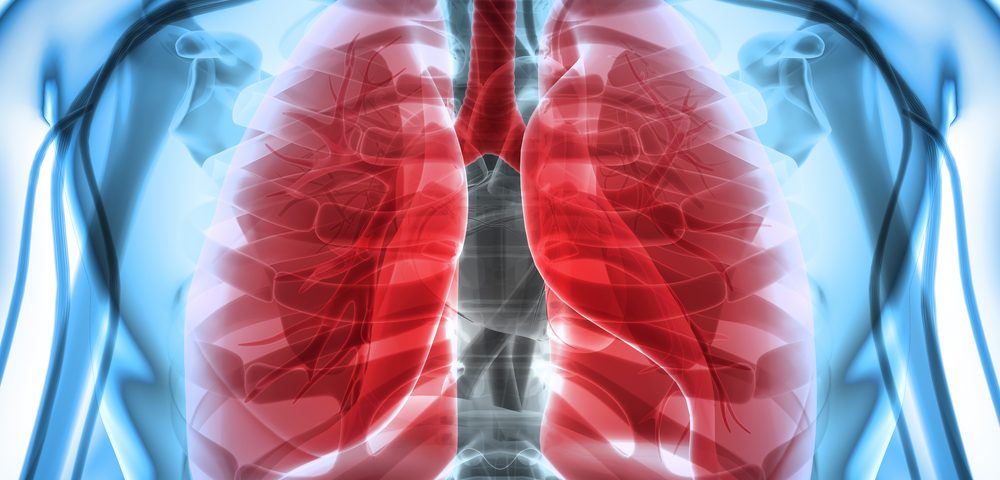Researchers in Boston and Toronto have discovered another molecular mechanism involved in lung scarring.
The team at Massachusetts General Hospital and Toronto’s University Health Network said scientists might be able to develop a pulmonary fibrosis treatment around the molecules, an enzyme known as ADAM10 and a protein known as sEphrin-B2.
In fact, using ADAM10 to inhibit sEphrin-B2 can reduce lung scarring, or fibrosis, the team said.
Their study, “ADAM10-mediated ephrin-B2 shedding promotes myofibroblast activation and organ fibrosis,” appeared in the journal Nature Medicine.
Normal lung wound repair involves cells known as fibroblasts producing collagen and other proteins. A chronic injury can lead to too many fibroblasts going to the site of a wound or transforming themselves into myofibroblasts, which are essentially revved-up fibroblasts. This over-activation results in uncontrolled tissue accumulation, leading to fibrosis.
To try to identify molecules that regulate fibroblast activation, the Massachusetts researchers looked at a genetic database of both patients with pulmonary fibrosis and patients with systemic sclerosis who had experienced lung scarring.
They discovered that the EFNB2 gene was more active in pulmonary fibrosis and systemic sclerosis patients than in healthy people. EFNB2 produces ephrin-B2 transmembrane protein, which binds to Eph receptors on neighboring cells.
Eliminating ephrin-B2 from the fibroblasts of mice with pulmonary fibrosis protected them against lung and skin fibrosis, the researchers learned.
The team also discovered much higher levels of the soluble form of ephrin-B2 — sEphrin-B2 — in the lung fluid of mice with pulmonary fibrosis and in the fluid of people with the disease. The ADAM10 enzyme actually generates sEphrin-B2, the team found. It releases sEphrin-B2 by clipping off the portion of the protein that extends outside a cell’s membrane.
Applying the soluble form of ephrin-B2 to the skin of healthy mice caused scarring there, researchers said.
The team also discovered that the body releases sEphrin-B2 in response to a lung injury. In addition, they determined that it sends signals that recruit additional fibroblasts to the wound and that changes fibroblasts into myofibroblasts, accelerating the scarring process.
Researchers’ discovery that “ephrin-B2 was cleaved from the cell surface and secreted into the airspace following lung injury was totally unexpected and led us to hypothesize that this soluble form of ephrin-B2 may contribute to lung fibrosis,” Dr. David Lagares, a professor at Massachusetts General’s Fibrosis Research Center, said in a press release.
“While ephrin-B2 typically interacts with receptors on different types of cells, both ephrin-B2 and its receptors are expressed [are found] on the surface of myofibroblasts, where their interaction usually suppresses the process leading to the overaccumulation of fibrotic tissue,” he said. “In the novel mechanism we have discovered, the release of sEphrin-B2 prevents that inhibitory interaction and activates the receptors, leading to the amplification of tissue fibrosis.”
Inhibiting ADAM10 prevented the release of sEphrin-B2. It also prevented the production of several fibrosis-associated proteins in pulmonary fibrosis patients’ fibroblasts.
Researchers observed the same thing in mice with pulmonary fibrosis, along with a decrease in myofibroblast activation and a substantial reduction in lung fibrosis.
The bottom line was that the study provided evidence that inhibiting ADAM10 can diminish fibrosis in mice.
“Our identification of the ADAM10-sEphrin-B2 pathway as a promoter of myofibroblast activation gives us a number of attractive therapeutic targets for pulmonary and other fibrotic diseases,” said Dr. Mohit Kapoor, a University Health Network arthritis specialist who was co-leader of the study.

